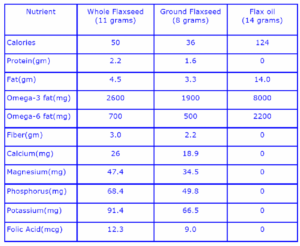linseed , Small seeds with curious nutrient content
The scientific name of linseed “Linum usitatissimum” is and his relationship with humanity is not only about the food industry. Flax seed has been used since ancient times and in the textile industry, as well as the creation of sails for sailing ships.
Flax seed is mainly used for the extraction of oil, there are two main types of seed – for culinary and industrial use.
Basically they meet are brown and gold seeds that are similar in nutrient content, except for Solin variety that contains only 1/10 of the normal amount of alpha-linolenic acid (ALA) in flaxseed.
In raw linseed varies in color from yellow, amber and gold to light, dark or red-brown.
You can meet and white or green seeds, but they are usually collected long after reaching their full maturity and therefore are not recommended for consumption. Avoid and black ones.
Origin
Cultivation of flax seed dates from between 4000 and 2000 BC and is characteristic of countries bordering the Mediterranean and in the Middle East.
Its origin is associated with an even more ancient period during the Neolithic.
From the outset, the plant was used both in cooking and in everyday clothing and other textiles.
This application finds place today, although production has become more specialized, and in the United States and Canada, are grown more oilseed varieties of flaxseed that are used for making various types of oil.
Linseed oil is not suitable for consumption, use in woody industry, art and more.
The oil which is suitable for consumption can be used in feed for livestock or cooking.
Oil varieties linseed classified as oilseeds along with soybeans, rapeseed, sunflower seeds and peanuts.
The largest producer of flaxseed in the world is Canada, followed by Russia, France and Argentina.
Today flax seed is considered a nutritious food containing valuable nutrients.
Food composition :
Flax seed is a good source of magnesium, phosphorus and copper and a very good source of dietary fiber, thiamin and manganese.
In 100 grams of flaxseed is 7.53 g monounsaturated fat and 28.73 g polyunsaturated fat. Saturated fats are 3.66, the
The content of omega-3 fatty acid is 22 813 mg, and omega-6-5911 mg.
It is also seen as a good antioxidant food.
Health benefits of consuming flaxseed
Contents of valuable nutrients
Flaxseed is high in omega-3 fatty acid, represented mainly by ALA. By flaxseed oil but can not get adequate amounts of EPA and DHA.
It also contains lignans – fibers that have a role in antioxidant protection due to their structure of polyphenols.
It should know, however, that lignans are one of the few naturally occurring substances in foods that function as weak or moderate estrogen when consumed by humans.
Another characteristic content of flaxseed are soluble, gel forming fibers that support the activity of the gastrointestinal tract.
How to choose and store flaxseed
Flaxseed can be purchased whole or ground.
Since the objectives seeds are difficult to chew when they are milled / crushed, improving their absorption.
Pre ground flaxseed however has a short shelf life.
If you buy ground flaxseed note that the packaging is intact, tightly closed and protecting it from light. Once opened, store it in the refrigerator for about 6-16 weeks.
The whole flaxseed can be stored for 6-12 months, enclosed in an airtight box and placed in a dark, cool and dry place.
We recommend buying whole flax seeds, store them as described above and to grind / crushed before consumption.
Flaxseed oil is very perishable and should always buy such opaque bottles stored in the refrigerator. It should have a slightly sweet taste and is not recommended to be used for heat treatment. You can put it in your food then.
However, flaxseed can be used in baked goods (breads, cakes, muffins).
Ideas for consumption
Flaxseed blends wonderfully with both savory and sweet foods.
How will you consume depends mostly on personal preference.
You can add it to other seeds and nuts to yogurt, salads, soups, shakes.
Flaxseed is among the foods that successfully replace eggs in various recipes. More about this can be found here.
Consuming it can diversify by adding it to bread and other baked goods, but it is better to do it at the end of cooking because of the high content of soluble fiber in it.
Remember, however, that regardless of what foods will add it is always preferable to crushed or daring to absorb better.

